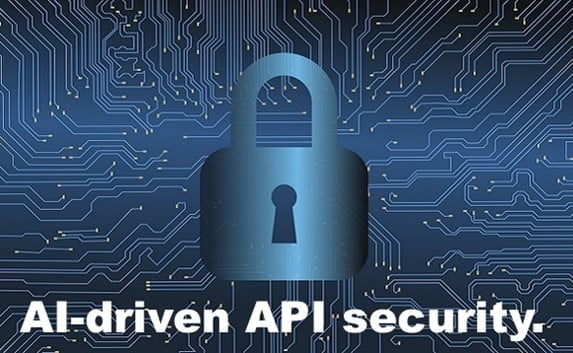Digital transformation initiatives powered by application programming interfaces (APIs) are opening up a whole new set of attack vectors for hackers to make their way into the system. API security has become the core focus of GDPR, PSD2, CDR, PCI, and HIPAA compliance. According to IBM, 50% of global security decision-makers had at least one breach in 2018, 540 million Facebook records were exposed due to an unsecured API.
Table of Contents
ToggleA report by Gartner states that even though people use web application firewalls and API gateways, an excessive number of breaches happen. Many alarming statistics suggest that powerful API protection is becoming a top priority with excessive usage of digital platforms. You can not rely solely on traditional tools to secure APIs today; you should utilize the potential of AI-driven API security measures.
AI is trained by utilizing a huge amount of data artifacts from both structured and unstructured sources. With the help of machine learning and deep learning, AI improves its knowledge for understanding cybercrime. In this blog, we are going to discuss the impact of AI capabilities on the API security landscape.
What is API security?

From a GPS allowing you to know the shortest routes to a phone fetching sports and weather updates, APIs are the most common communication between the application and end-user. APIs are used extensively; thus, it is important to ensure its security from cyberattacks. Gartner predicts that by 2022 API attacks will be the most common attacks. Gartner also predicts that by 2021 90% of web-enabled applications will have more surface area in the form of exposed APIs rather than the user interface. There are many API security best practices such as tokenization, using API gateways, using encryptions and signatures, using quotas and throttling, and more. These security practices become more enhanced with the help of Artificial intelligence capabilities.
Enhances API security
Traditional API security tools are not enough to protect APIs from breaches in today’s environment. AI-driven API security paired with your foundational security tools is required to ensure better API security. For example, management systems can reject invalid sign-on attempts, but they can stop them from continuously trying new combinations. Hackers can fetch out keys and tokens used for client authentication through a man-in-the-middle attack, then present the valid token to gain access to API services. It can lead to a massive breach and misuse of API services. Thus, organizations must be able to distinguish between good and bad traffic to ensure that each API is being accessed properly.
Increased transparency in API activities
Today’s vulnerabilities require deep visibility into individual API activities to identify good and bad traffic in each API. Organizations can utilize the potential of AI and machine learning to distinguish between normal and abnormal traffic behavior in APIs deployed across all cloud, gateways, and application servers. It allows organizations to quickly detect and respond to a security threat, easily generate compliance reports, analyze trends of usage, and conduct a forensic investigation.

Detection of common API threats not covered by foundational API security tools
Many API security tools provide a set of security features such as authentication and rate-limiting. It ensures that the resources are securely accessible by internal groups, partners, customers, and third-party developers. But these practices are often lacking the ability to stop attacks that are barriers in traditional security practices such as detecting abnormal behavior and man-in-the-middle attacks. These attacks are built specifically to attack APIs and go unnoticed in the traditional approach. AI-driven API security solutions allow organizations to detect and respond to the most common API security risks which are not covered by foundational API security tools.
Prevention from misuse and abuse
Hackers create activities that appear to be executed by valid accounts, and it took a significant amount of time for organizations to detect recent attacks. Some of these attacks were executed with reverse API engineering, i.e., reverting an API with the intent to find vulnerabilities to gain access to the valuable data connected to the API. Hackers can abuse access and misuse the data associated with it once they find a vulnerability. AI is uniquely positioned to help organizations track and respond to the valid account exhibiting normal behavior; it helps to track and respond to breaches that go undetected.

Wrapping Up
APIs are valuable for any enterprise today; it is helpful for both internal and external users, but they often pose a vulnerability to cyber attacks. Most sophisticated attacks these days can’t be prevented with traditional API security tools as malware they deploy and attack they chose is constantly changing. API security is a critical component for organizations today for digital transformation initiatives; it can improve cyber resiliency across channels. Adopting an efficient API security infrastructure is core to a modern digital transformation strategy. The key to ensuring the security of APIs is having transparency into API activity and AI-driven breach detection. Both are required to be layered over basic API access control to catch attacks associated with APIs. Another part that falls with traditional security is that it fails to scale with the size of a modern organization because businesses use new technologies; their connections are on a large scale. It becomes complex to manage basics such as hygiene around patching, vulnerability management, and more. It requires modern infrastructure to defend the API security risks in this modern digital era. Organizations can leverage the process of overcoming cybersecurity limitations with the help of Artificial Intelligence.
Summary:
AI Drived API Security
Digital transformation initiatives powered by application programming interfaces (APIs) are opening up a whole new set of attack vectors for hackers to make their way into the system. A report by Gartner states that even though people use web application firewalls and API gateways, an excessive number of breaches happen. Many alarming statistics suggest that powerful API protection is becoming a top priority with excessive usage of digital platforms. AI is trained by utilizing a huge amount of data artifacts from both structured and unstructured sources. With the help of machine learning and deep learning, AI improves its knowledge for understanding cybercrime. From a GPS allowing you to know the shortest routes to a phone fetching sports and weather updates, APIs are the most common communication between the application and end-user. APIs are used extensively; thus, it is important to ensure its security from cyberattacks.





